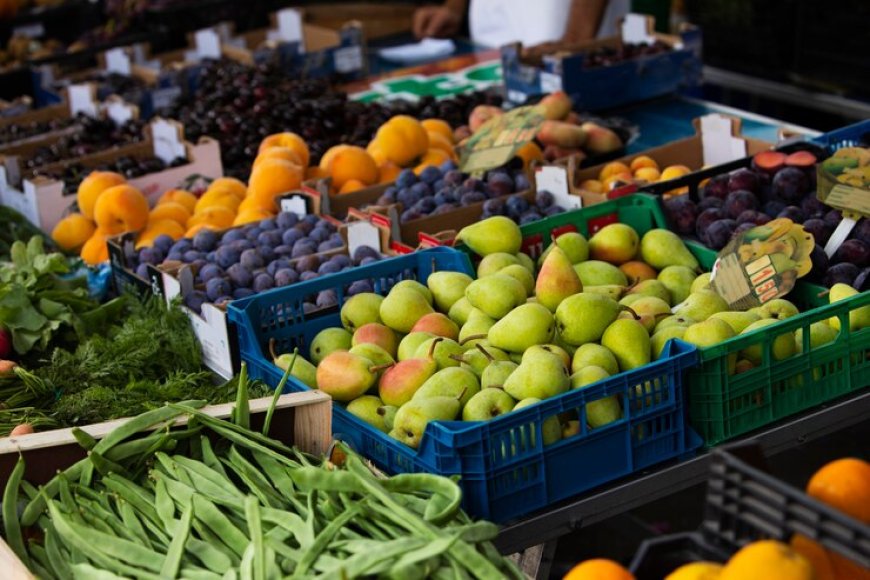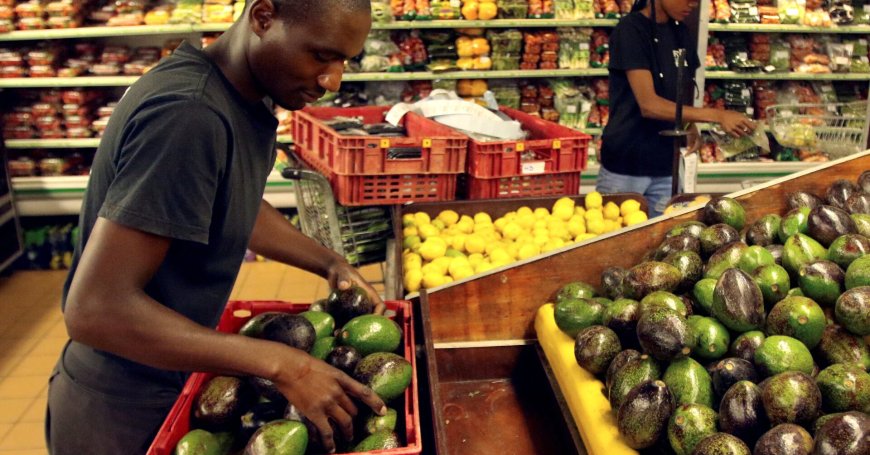Driving The Growth of Zimbabwe’s Horticulture Industry: Policy Reforms, Climate Resilience and Market Competitiveness for Vision 2030

Today, we're diving deep into the fertile fields of Zimbabwe, where a remarkable transformation is underway. Speaking at the 13th Zimbabwe Agricultural Show, Permanent Secretary Professor Dr. O. Jiri of the Ministry of Lands, Agriculture, Fisheries, Water and Rural Development outlined a strategic vision to cultivate a thriving horticulture industry, a key pillar in the nation's journey toward becoming an upper-middle-income economy by 2030.
By Francis S. Bingandadi
Seeding a New Era: Zimbabwe's Agricultural Revolution
For a country where 62% of the population resides in rural areas and largely depends on subsistence farming, a shift in strategy is not just welcome—it's overdue. The government's
Agriculture, Food Systems and Rural Transformation Strategy 2 (AFSRTS 2) is the blueprint for this change, aiming to ensure national food security, improve nutrition, and develop the rural economy. This isn't a solo effort; it’s a multi-sectoral approach involving government ministries, private companies, civil society, and development partners.
The strategy is built on several key pillars designed to address the challenges and opportunities within Zimbabwe's food system:
Sustainable and Productive Agriculture: This pillar emphasizes increasing output and productivity through climate-smart practices, like the Pfumvudza/Intwasa program, which promotes conservation farming to boost yields and resilience, especially for smallholder farmers. The plan also includes expanding irrigation infrastructure to reduce the dependence on rain-fed agriculture. The government is pushing for an irrigation-driven agricultural revolution to support the goal of a
$2 billion horticulture industry. The target is to increase irrigated land for horticulture from the current 10,000–15,000 hectares to a transformative 35,000 hectares under the
Vision 2030 Accelerator Model’s Village Business Units (VBUs).
Food and Nutrition Security: The focus here is on promoting the production of diverse, nutritious foods, including traditional grains, vegetables, and biofortified crops like orange maize and iron-rich beans, to combat malnutrition.
Rural Industrialization and Development: A core objective is to industrialize rural areas by strengthening agricultural value chains, creating off-farm employment, and supporting small- and medium-sized enterprises (SMEs) through agro-processing hubs. The ultimate goal is to lift people out of poverty.
Access to Markets and Finance: This pillar aims to create an environment where farmers can easily access lucrative markets and financial services. Initiatives are in place to help farmers get credit, improve post-harvest management, and connect with domestic, regional, and international markets.

Prof. Jiri, said that, "Rain-fed farming can no longer support the ambitious goals of a modern horticultural sector as we aim to establish a USD2 billion horticulture industry, and it is essential to increase the irrigated land for horticulture from the current 10 000 – 15 000Ha to a transformative 35 000Ha under the Vision 2030 Accelerator Model’s Village Business Units (VBUs), which could potentially triple productivity."
The Permanent Secretary, added that, "The Ministry’s Agriculture, Food Systems and Rural Transformation Strategy 2 (AFSRTS 2) interventions will be designed to enhance agricultural productivity and food security, promote value addition and empower rural communities including the Horticultural sector."
From Farm to Fork: A Renaissance of High-Value Crops
Zimbabwe's horticulture sector has experienced a remarkable resurgence since 2017, driven by strong policy support and targeted investments.

The Blueberry Boom: Once experimental, blueberry production has become a huge success story. From just $1 million in 2018, exports soared to
$50 million by 2024, with volumes increasing by a staggering 351% since 2020.
Citrus to China: Since the signing of a citrus protocol in 2022, Zimbabwe has made significant strides in exporting fresh citrus to China, opening up vital new marketing avenues for farmers.
Sweet Success with Potatoes: Zimbabwe has achieved self-sufficiency in Irish potato production. The government designated potatoes as a strategic crop, with a target of growing 9,000 hectares in the 2025 winter season to yield an estimated 243,000 metric tons by October. Efforts are also underway to achieve full national self-sufficiency in sweet potatoes by providing elite virus-free vines to rural communities, aiming to boost yields from 5-7 MT/Ha to over 20 MT/Ha.
Policies for Prosperity: Cultivating a Secure Future
The government is not just talking; it's taking concrete steps to ensure the sector's growth. A significant development was the issuance of land tenure deeds to A2 and commercial farmers on December 20, 2024, making land more secure, bankable, and transferable. This new policy will improve access to finance and boost productivity.
Other key initiatives include:
The Horticulture Recovery and Growth Plan (HRGP): This plan is the roadmap for revitalizing both conventional and rural horticulture, aiming to involve all 1.8 million rural households through the Presidential Horticulture Scheme.
Joint Ventures: The Ministry is promoting partnerships that link farmers with a lack of resources to those with capital.
Horticulture Development Council (HDC): Established to focus on policy formulation, capacity building, and market development.
ZMX: A new platform created for marketing agricultural produce, including horticulture.
Streamlined Export Processes: The Ministry's Plant Quarantine Services department is working to control pests and diseases and is in the final stages of operationalizing a one-stop online permit system to streamline export and import transactions.
The Road Ahead: A Collective Responsibility
The growth of Zimbabwe's horticulture industry is a shared mission. As Professor Jiri emphasized, it requires a
"Whole of Government and Whole of Society approach," involving development partners and the private sector. The goal is to cultivate a brighter future for the nation, ensuring the sector thrives and uplifts the livelihoods of countless Zimbabweans.
"Food Security, Everywhere, Everyday". This is the mantra driving Zimbabwe's journey towards Vision 2030, a vision where the agricultural sector is not just a source of sustenance but the engine of rural economic transformation.

 Francis
Francis 





